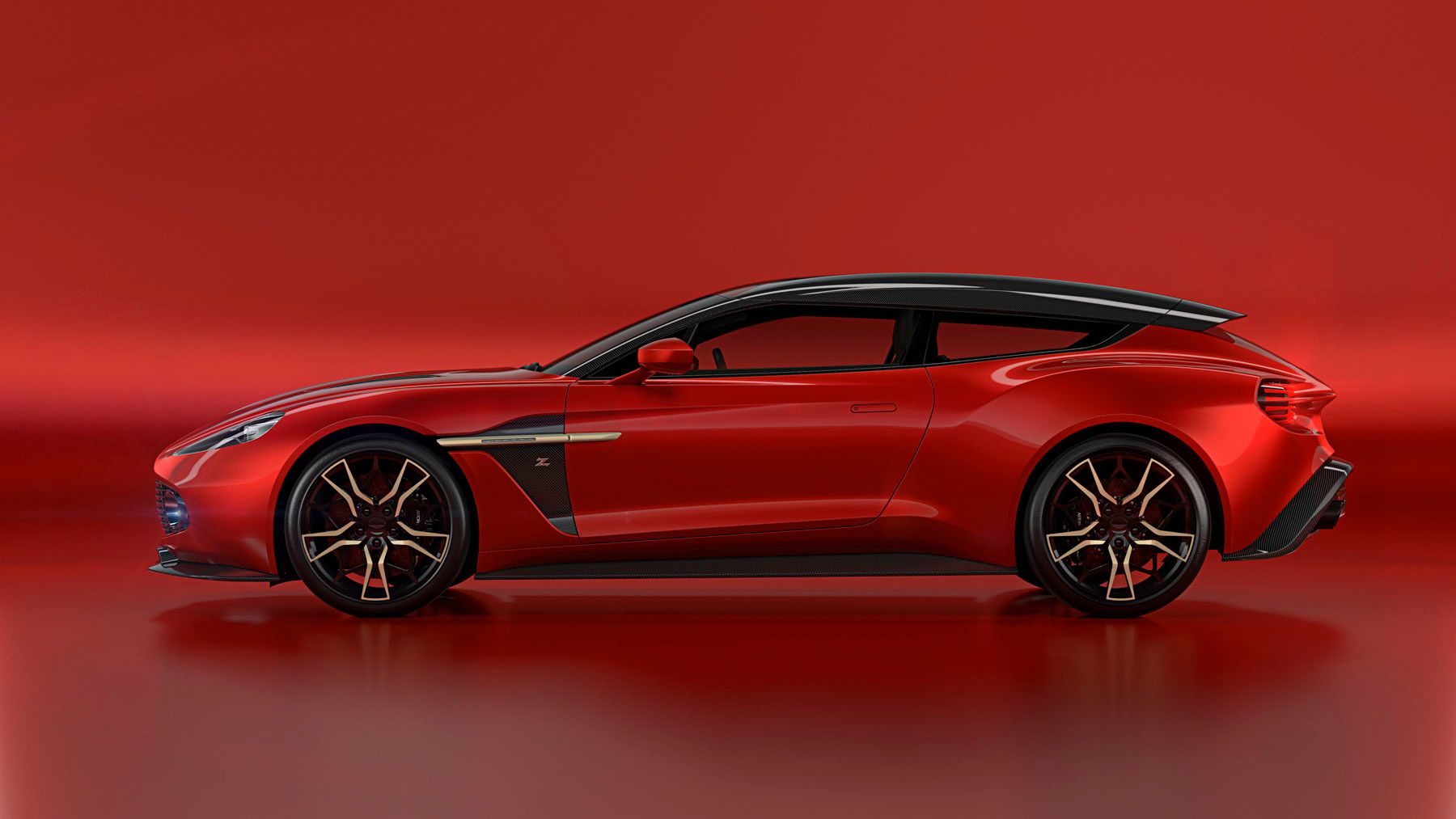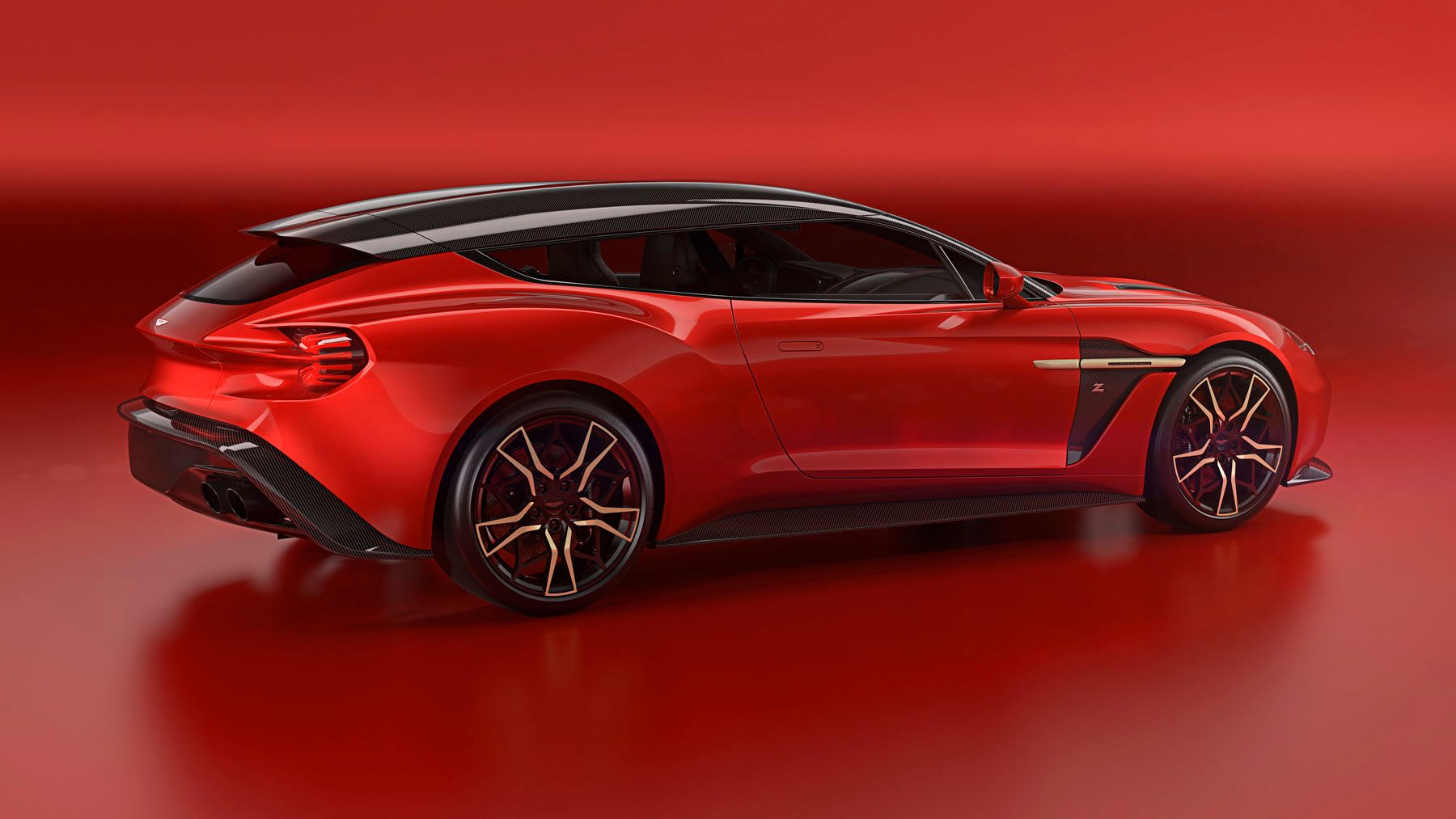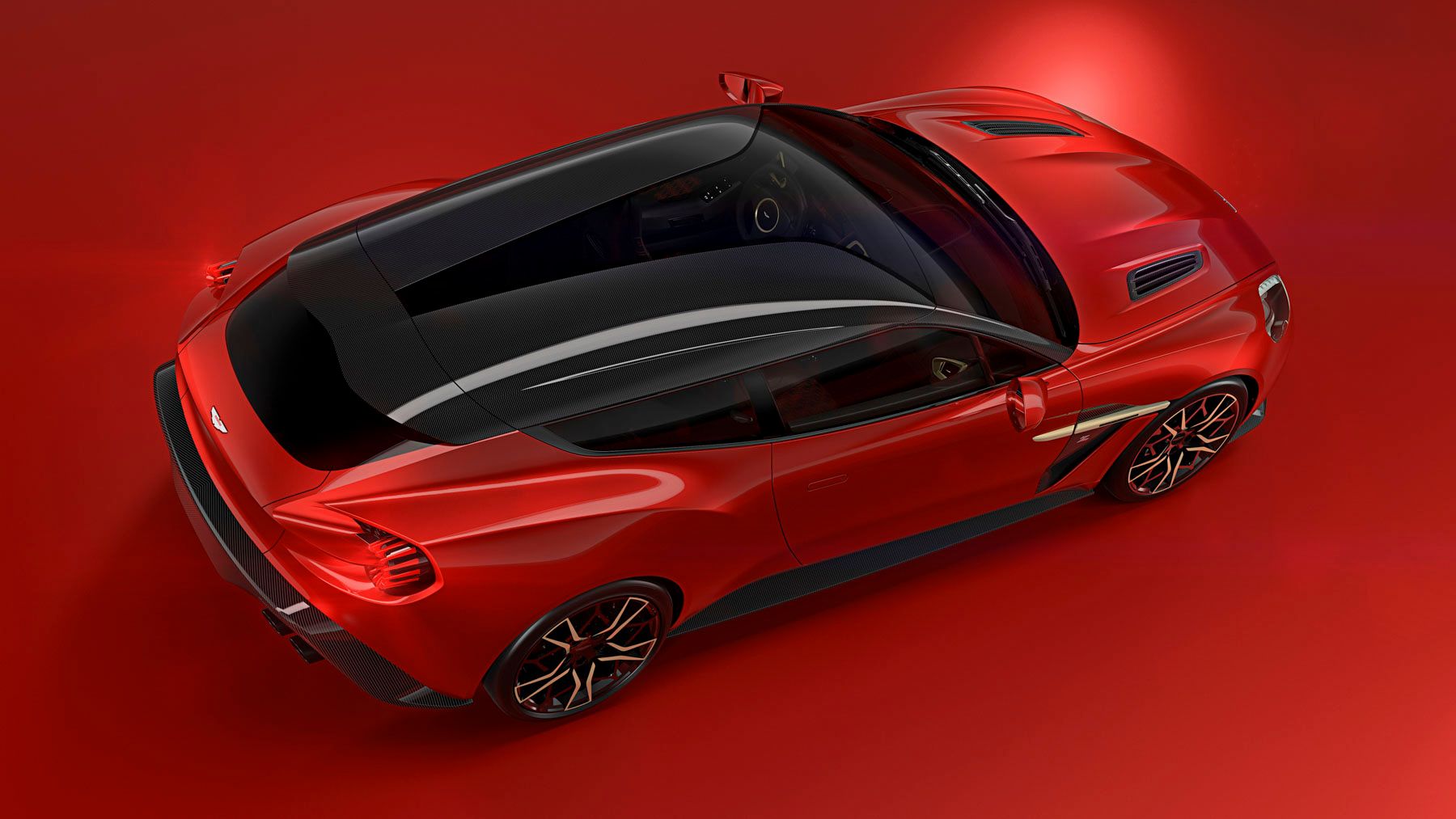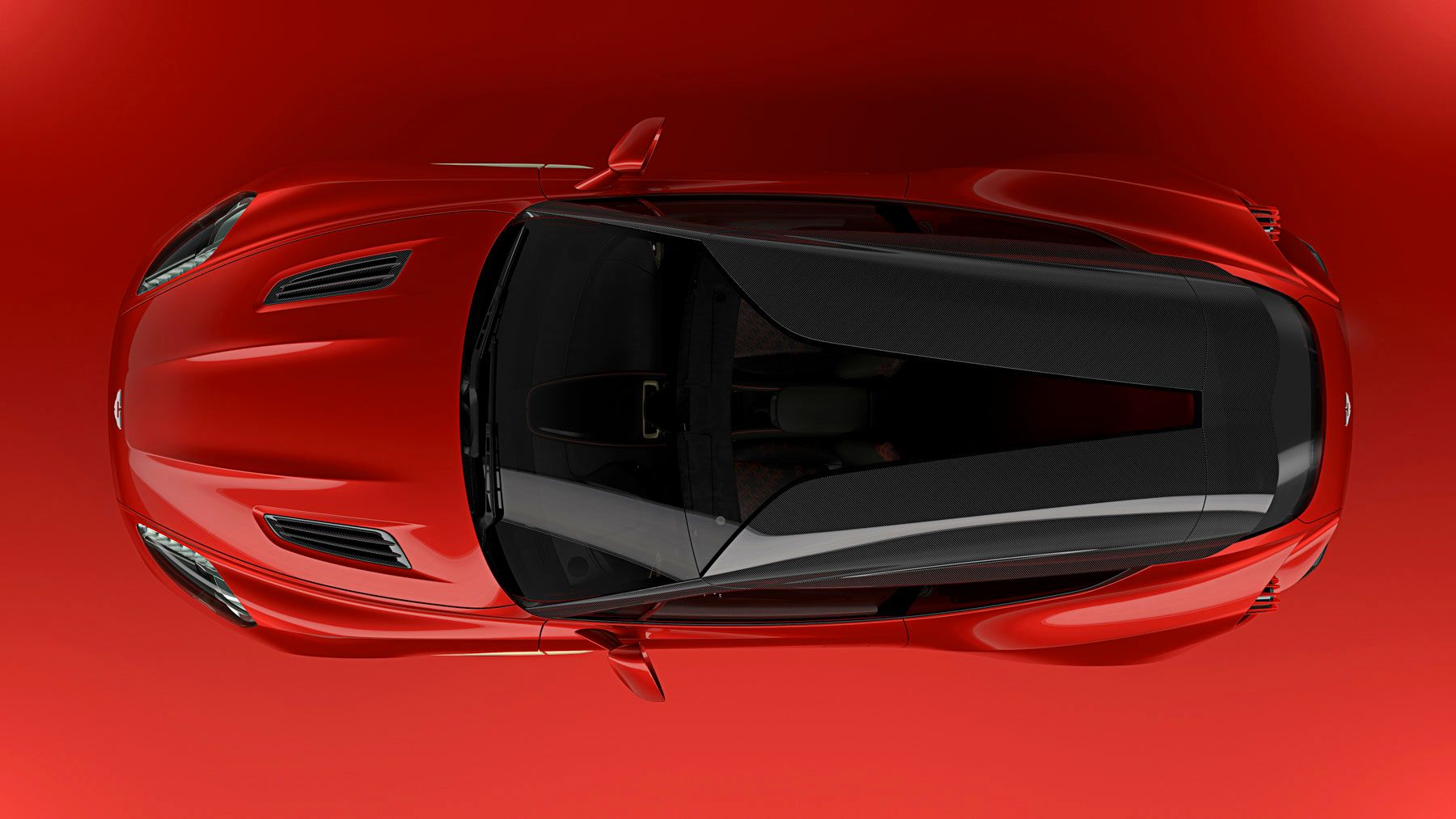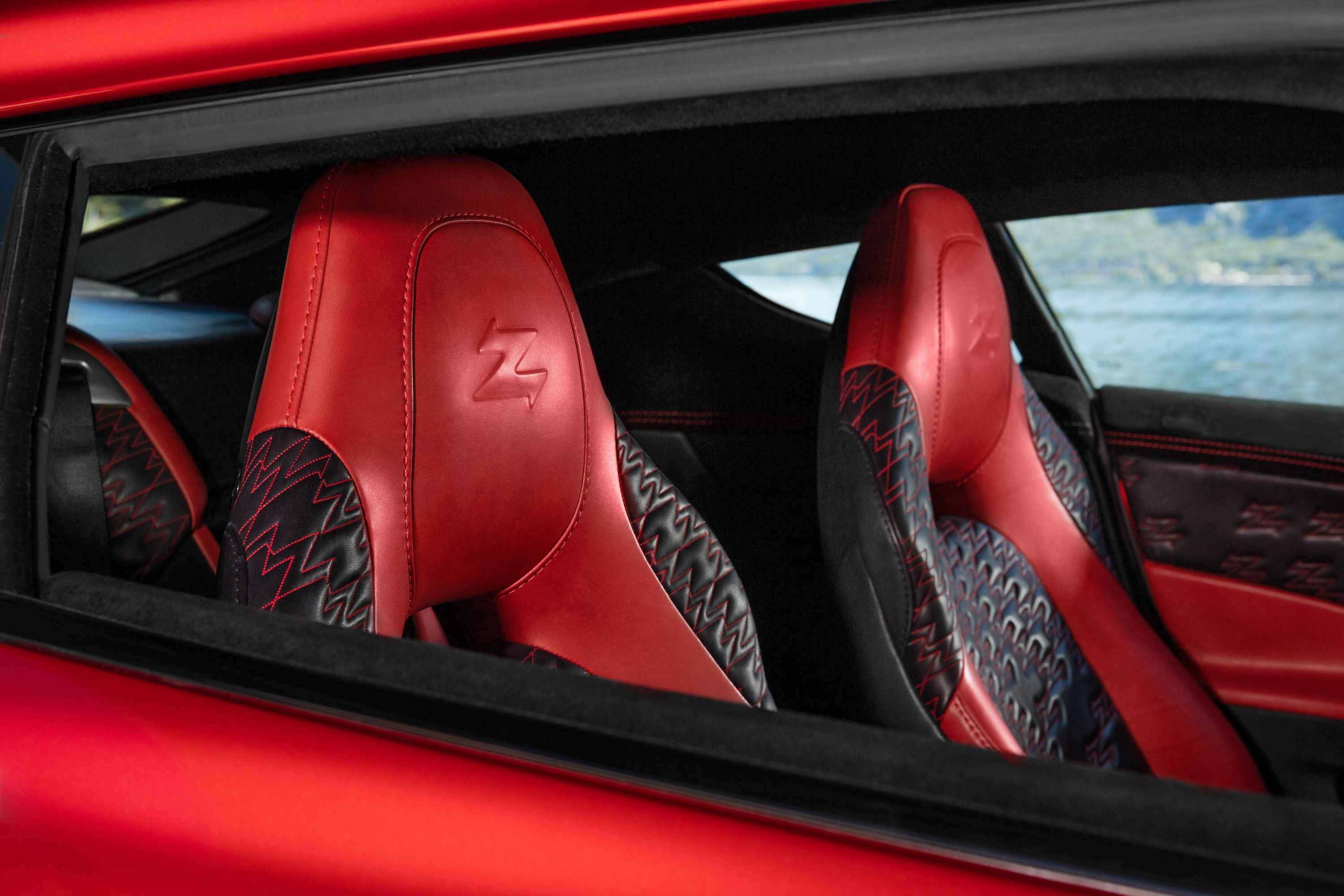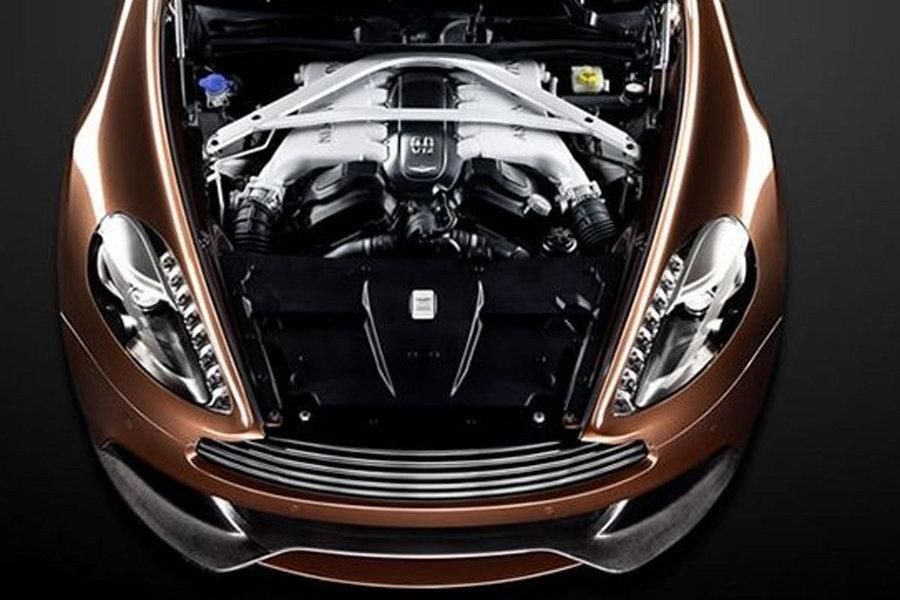Redesigned in 2012, the current Aston Martin Vanquish is set to retire in less than a couple of years in order to make way for a brand-new model, and the British firm is doing whatever it takes to spice things up before pulling the plug. In 2016, it unveiled a re-bodied version of the grand tourer made by Zagato, but the coupe was soon followed by a Volante version. 2017 brought a Speedster model as well, and with 2018 just around the corner Aston Martin and Zagato launched a new body style, the Shooting Brake. The wagon model will be as exclusive as its sibling and likely extremely expensive, but it's an important milestone in a market where shooting brakes have almost gone the way of the dodo bird.
While the Vantage Zagato wagon arrived unexpectedly, it's not exactly surprising that Aston Martin created a shooting brake. The British firm is no stranger to this body style, and it has released quite a few wagons in the past. Harold Radford built such versions of DB5, DB6, and DBS back in the 1960s, but Aston Martin made its very own production run of the Virage in the early 1990s. More recently, Bertone transformed the Rapide in a shooting brake, but these are just a few examples. We definitely need more shooting brakes on the market today, and even though the Vanquish Zagato is limited to very few examples, it will be great to see one more sports wagon hit public roads.
Continue reading to learn more about the Aston Martin Vanquish Zagato Shooting Brake.
2018 Aston Martin Vanquish Zagato Shooting Brake
- Make: Array
- Model: 2018 Aston Martin Vanquish Zagato Shooting Brake
- Engine/Motor: V12
- Horsepower: 580
- Torque: 465
- Transmission: eight-speed automatic
- [do not use] Vehicle Model: Array
Exterior
Much like the Speedster and the Volante, the Shooting Brake model is identical to the Zagato coupe below the waist. So you're basically getting an already good-looking grand tourer with more muscular cues and a unique twist thanks to the revised roof.
Up front, the new Zagato model sports the same massive grille with LED daytime running lights at each corner, a big splitter at the bottom, and a sculpted engine hood with big vents on each side of the center section. It also has the same deeply sculpted side skirts and DB11-inspired fender strake, but the latter was mounted on a black background. With all the other Zagato models having their front fenders finished in one color, this is yet another element that makes the Shooting Brake unique.
The side mirrors carry over unchanged, but this is cool since they're inspired from those seen on the One-77 limited-edition supercar. But, arguably, the biggest change to the profile is the longer, wagon-style roof. The upper section is actually identical to the coupe from the A- to the B-pillars, but from there on, Aston Martin designed significantly longer quarter windows and C-pillars. The latter are flatter and continue the arch of the roof toward the front fascia. It forms a wagon-like tailgate, but with a narrower design that allows the Vanquish Zagato to keep it muscular haunches.
The rear fascia remains the same as far as the round taillights, the pointy decklid, and the carbon-fiber diffuser go. However, the rear glass is obviously smaller, while the heavily raked angle of the coupe is now gone. But the sloping roofline and the aggressive spoiler make the shooting brake just as aggressive as the coupe. The roof itself is also an interesting piece of engineering, with the fully transparent area being shaped like a V, with the narrower end oriented toward the rear. The remaining surface and the spoiler seem to be made of carbon-fiber, so Aston Martin took some precaution to keep the roof as light as possible.
All told, this Zagato is a mighty fine example of how a modern shooting brake should be designed and engineered and it's by far the most appealing of the Vanquish Zagato lineup. Of course, this has to do with the fact that shooting brakes aren't very common nowadays and the fact that I'm a big fan of sporty wagons.
Interior
Note: 2017 Aston Martin Vanquish Zagato pictured here.
There aren't any photos of the interior, but it's safe to assume that the Shooting Brake is like any other Vanquish Zagato out there. This also means that it's almost identical to the standard Vanquish, being set apart by new luxury features. The main highlight here is the "Herringbone" carbon-fiber paint with anodized bronze detailing on the center stack. There’s also the aniline leather and a unique "Z" quilt pattern stitch on the seats and door panels. The headrests have the letter "Z" embossed, while the upper door panels received double contrast stitching.
The coupe also has "Z" headliner stitching, but this feature is obviously missing here since the most of the roof is transparent. What remains unknown is whether the Shooting Brake is a two or a four seater. A picture showing the car from above suggests that Aston Martin may have removed the rear seats. This makes it somewhat less practical than a standard Vanquish in terms of how many passengers it can carry, but it provides additional luggage room. Not that customers will actually use it as a vacation car, but it remains somewhat true to the original shooting brake concept, which was as utilitarian as a full-fledged wagon.
Drivetrain
Note: Standard Aston Martin Vanquish engine pictured here.
Just like the rest of Vanquish Zagato family, the shooting brake gets its juice from the familiar 5.9-liter V-12 that powers the standard Vanquish. Output is rated at 592 horsepower and 465 pound-feet of torque in Europe, while the U.S.-spec version comes with 580 horsepower. The 12-horsepower deficit most likely has something to do with emission regulations on this side of the pond.
There’s no info on performance as of this writing, but we do know the coupe model hits 60 mph in 3.5 seconds. The shooting brake could be just as quick, as it shouldn't be significantly heavier. The V-12 mates to the same ZF-developed, eight-speed automatic transmission from the regular Aston Martin Vanquish.
Prices
Aston Martin hasn't revealed pricing for any of its Vanquish Zagato models, and the Shooting Brake is no exception from this rule. The only hint we have about this series is that the Zagato Speedster could cost a whopping £1.3 million, which converts to around $1.7 million as of October 2017. But, unlike the Speedster, which is limited to only 28 units, all the other Zagato models, the Shooting Brake included, are built in 99 examples. So it's safe to assume that the Shooting Brake will cost less. than that. It won't be as "affordable" as the regular Vanquish, priced from around $300,000 either, but it could cost around $1 million. Granted, it's a lot of money even for a beefed-up Vanquish, but much like any other boutique shooting brake out there, this Zagato-design wagon will sell out in no time.
Competition
In the current market, there are only four regular production shooting brakes you can buy: the Mercedes-Benz CLS and CLA, the Porsche Panamera Sport Turismo, and the Ferrari GTC4Lusso. Of the four, only the Ferrari is a worthy competitor to the Vanquish Zagato Shooting Brake.
Ferrari GTC4Lusso
Essentially an upgrade to the Ferrari FF, the GTC4Lusso is actually very similar to the Vanquish Zagato. It has a long nose, a sporty roof, and virtually no decklid to the rear. Sure, it's roofline and tailgate aren't as sleek as the Zagato's, but it's a proper shooting brake model. And, the new features it received in 2016 make it more appealing than the FF. Luxury is a given inside the cabin, with nearly every surfaced draped in leather, Alcantara, aluminum, and carbon-fiber. Unlike the Vanquish, it also has a number of race-inspired features, like instrument cluster with the white clock in the middle and the flat-bottom, multi-control steering wheel. Output-wise, it's the more potent option, with its 6.3-liter V-12 engine generating a whopping 680 horsepower and 514 pound-feet of torque. This translates into a 0 to 60 mph sprint of 3.3 seconds, which should be at least two tenths quicker than the Aston Martin. Top speed is also far superior at 209 mph. Pricing starts at a little over $300,000, so it's more affordable too.
Read our full review of the 2017 Ferrari GTC4Lusso.
Conclusion
When Aston Martin unveiled the Vanquish Zagato Concept as I said to myself "that's one hell of a sexy coupe" and I just knew that we will eventually see a production model. And, Aston Martin delivered shortly after. But I honestly didn't expect the British brand to expand the Vanquish Zagato nameplate to include four different models. Aston Martin has rolled out quite a few Zagato models in the past, but no project was a complex as this one. And on top of the usual coupe and convertible, we also got a speedster and a shooting brake. Needless to say, all of them are spectacular in their own right, but the Speedster and the Shooting Brake are by far the more exotic versions, especially since you don't see these body styles on the road quite often.
Up until now, the Speedster was my favorite variant of the Vanquish Zagato, but I just fell in love with the new Shooting Brake model. I must admit that I am a fan of vintage shooting brakes, but I'd take the Vanquish Zagato in a heartbeat. Assuming it wouldn't be this exclusive and expensive. But hey, these attributes are part of what makes a car stand out from the pack.
References
Aston Martin Vanquish
Read our full review on the 2017 Aston Martin Vanquish Zagato.
Read our full review on the 2017 Aston Martin Vanquish Zagato Volante.
Read our full review on the 2018 Aston Martin Vanquish Zagato Speedster.
Read our full review on the 2018 Aston Martin Vanquish S.

